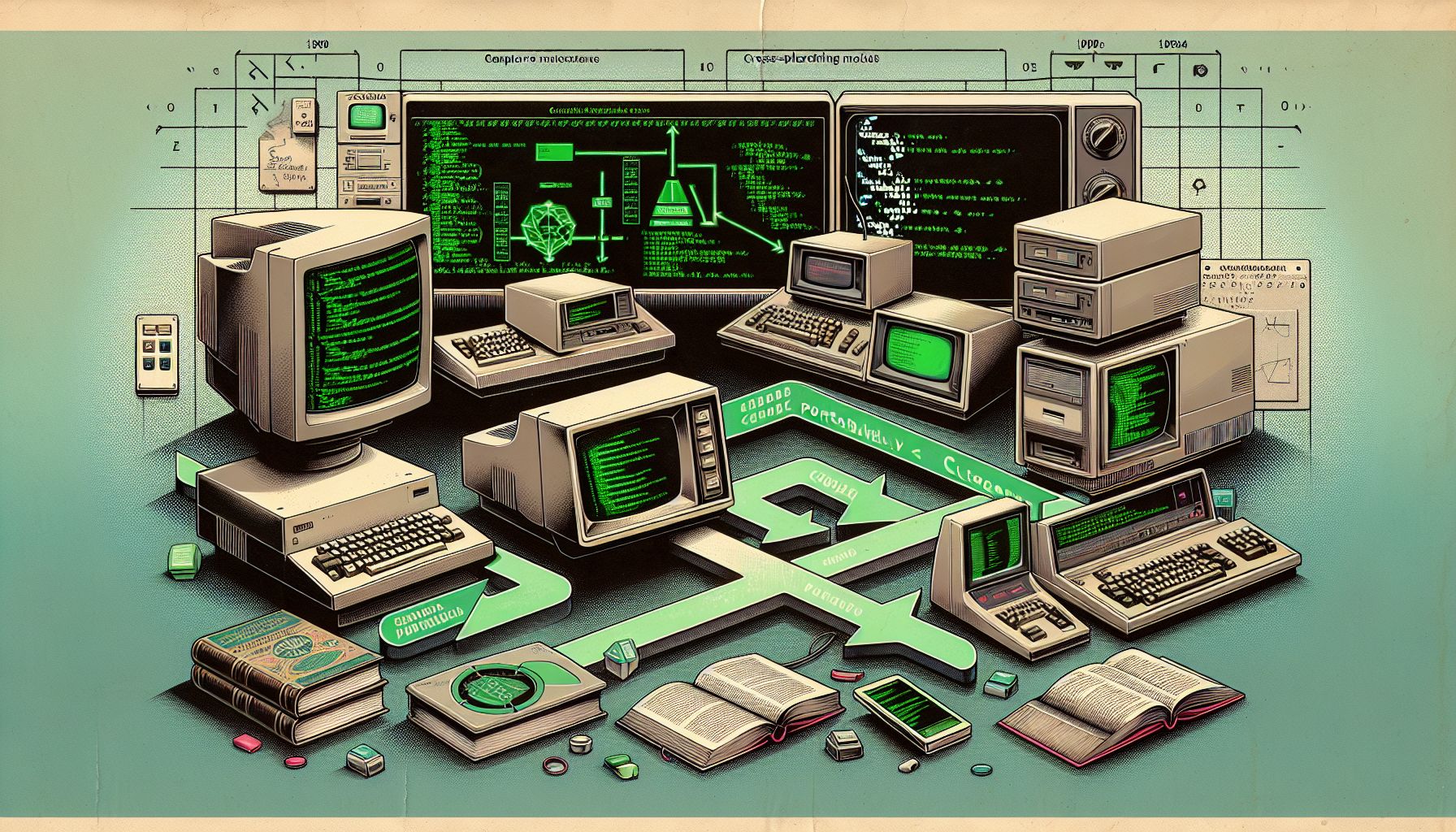📌 Let’s explore the topic in depth and see what insights we can uncover.
⚡ “Believe it or not, the digital universe you’re navigating today owes much of its existence to a programming language birthed in the 80s. Let’s rewind to the era of neon lights and big hair to explore the rise of the C programming language and the revolution of portability!”
In the world of programming, few languages have enjoyed the enduring popularity and influence that the C programming language has. Since its inception in the late 1960s and early 1970s, the C language has been a bedrock of the programming community, influencing numerous other languages and contributing significantly to the realm of portable software. This blog post is a deep dive into the emergence of the C programming language and its significant role in enhancing software portability, with a special focus on the transformative decade of the 1980s. We’ll explore the origins of the language, its key characteristics, its contribution to portability, and why it remains relevant even today.
🚀 The Genesis of the C Programming Language

Unfolding C Language's Birth & Portability: A 1980s Saga
The creation of the C programming language is closely tied to the development of the UNIX operating system. In the late 1960s, computer scientists Dennis Ritchie and Ken Thompson at Bell Labs started working on UNIX, a new operating system designed to be multi-tasking, multi-user, and portable across different hardware platforms. Initially, most of UNIX was written in assembly language, which was powerful but lacked portability. The need for a high-level, efficient, and portable language led to the development of the C language by Dennis Ritchie in 1972. C was based on an earlier language called ‘B’, which was itself derived from ‘BCPL’. However, C added data types and a host of other features, making it far more powerful and flexible than its predecessors. By 1973, the UNIX operating system was almost entirely rewritten in C, marking a significant milestone in the history of both UNIX and the C language.
👨💻 Key Characteristics of the C Programming Language
C is a procedural language, which means that it follows a step-by-step approach to problem-solving, just like following a recipe. 🔍 Interestingly, in contrast to declarative languages (like SQL) where you tell the computer what you want, but not how to get it.
Key characteristics of C include:
**Efficiency
** C is close to assembly language in terms of its efficiency, making it ideal for system programming tasks like writing operating systems.
**Flexibility
** The language provides a wide array of built-in functions, data types, and operators.
**Portability
** Perhaps the most significant contribution of C, it allowed software to be written once and run on virtually any hardware platform with little or no modification.
**Modularity
** C introduced the concept of functions, allowing programmers to break down complex problems into manageable parts.
💼 C and the Advent of Portability
The 1980s marked the rise of personal computers, and with it, the need for software that could be run on different types of hardware. As UNIX was rewritten in C, it became possible to take the UNIX operating system, compile it with a C compiler for the new machine, and have a functioning operating system. This was a revolutionary concept at the time and marked the beginning of portable software. The C programming language was instrumental in this shift. Its structure and syntax allowed for programs to be written in a general enough way that they could be executed on different hardware architectures with minimal changes. Portability had significant implications, not just for operating systems, but also for application software. It meant that software developers could now write programs that could be used on any machine, dramatically expanding the potential user base for their products.
🌟 The Legacy and Continuing Relevance of C
Even though new programming languages have emerged since the 1980s, the C language continues to be widely used today. 📌 In fact, the foundation for modern system software: operating systems like Windows, Linux, and iOS are written in C or its successor, C++. Furthermore, other languages like Python, Ruby, and PHP are all written in C, attesting to its lasting impact. The C language’s contribution to portability remains one of its most significant legacies. Today, we take it for granted that we can run software on different hardware platforms, thanks to the groundwork laid by C and UNIX in the 1970s and 80s.
🧭 Conclusion
Looking back at the 1980s, we can see a transformative period in the realm of programming, marked by the rise of the C language and the concept of portability. The C language, with its efficiency, flexibility, and most importantly, its portability, was a game-changer. It not only enabled the widespread adoption of the UNIX operating system but also paved the way for the development of portable application software. While new languages have since been developed, C’s influence and legacy are undeniable. Its principles continue to inform modern programming paradigms, and it remains a critical tool in a programmer’s arsenal. As we continue to advance in the digital age, the story of the C programming language serves as a reminder of how innovation and foresight can have lasting effects on technology and society.
🚀 Curious about the future? Stick around for more discoveries ahead!
